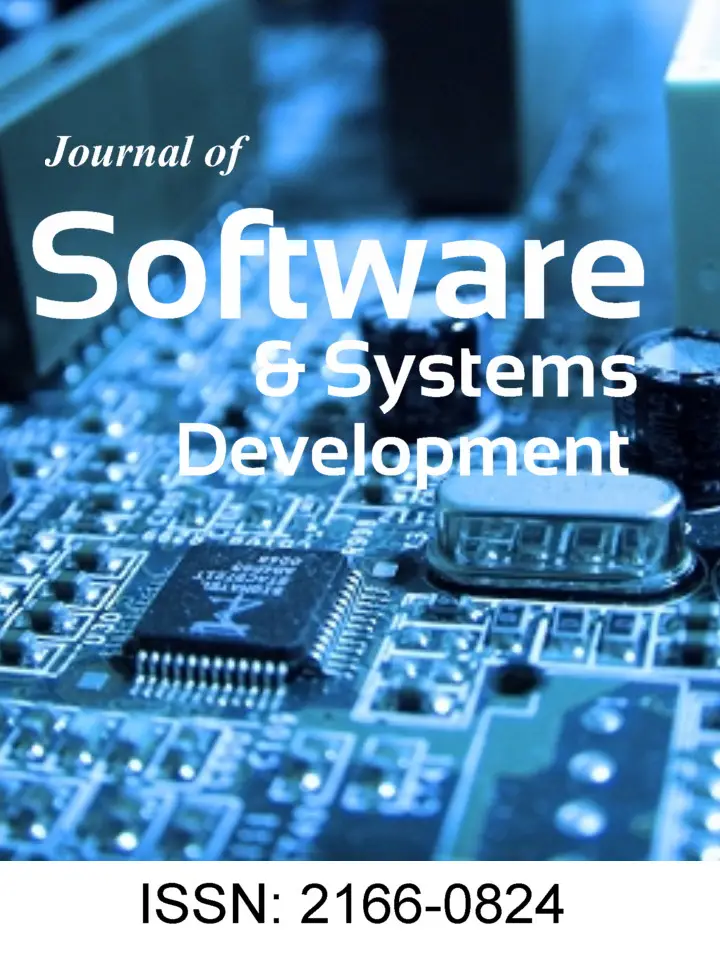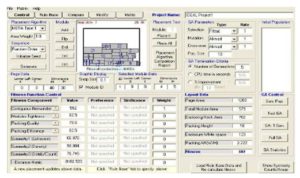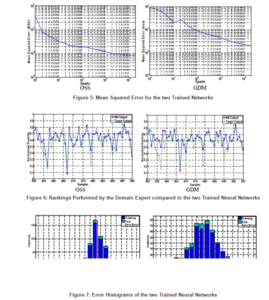This research has some limitations, including the following. In general, a large representative data set is needed for a viable trained ANN. However, generating a large and representative data set in such an intricate problem domain as FLP may not be guaranteed. Indeed, the interaction of decision maker with the layout alternatives may even modify the mental model of the decision maker. Nevertheless, an online ANN may also be useful in such dynamic environments so as to learn and update preferences in an automated manner. Often a lower value of MSE is merely a result of overlearning in the ANN. Consequently, there is a need for a separate validation data set to ensure the trained ANN actually depicts a good generalization capability. Furthermore, in the proposed scheme, the ANN is trained on data generated by a single decision maker. However, often in an application of FLP of some real world consequence, multiple decision makers and users from competing stakeholder constituencies are involved in selection and ranking of layout alternatives. Such multiplicity of decision makers and stakeholders may add another level of complexity and inconsistency in the preferences. Nevertheless, an intelligent system for automating FLP process may also prove a useful tool in reconciling such competing stakeholder preferences, where ANN can play a significant role. Furthermore, such robust multi-criteria decision making tools for qualitative and non-commensurate preferences as Analytic Hierarchy Process (AHP) (Hadi-Vencheh & Mohamadghasemi) may also be utilized at the initial stage in generating preferences for the use in ANN.
Conclusions
This paper proposes a novel application of artificial neural networks in automating fitness evaluations of layout alternatives for facilities layout planning and optimization. Through simulation studies, it has been demonstrated that artificial neural networks are capable of learning well the uncertain and unstructured preferences of a domain expert in facilities layout planning. The tedious and knowledge-intensive nature of the problem as well as the unavailability of domain experts in a timely or economical fashion indicates that the proposed approach to automating the layout optimization approach can bring significant benefits to the various related application domains. Furthermore, such a tool would spur the much sought for research in decision support and expert systems in FLP. In the future, we would like to develop a metaheuristic-based layout optimization system, where layout fitness is generated automatically using an ANN trained on user rankings of preliminary layouts. We would also want to incorporate such a layout optimization system into an intelligent expert system for decision support in facilities layout planning to test the impact of this approach on the efficacy and efficiency of the overall process.
Acknowledgements
This research was supported by the Institute of Scientific Research of Umm Al-Qura University (Project # 43108029) and National Science, Technology, and Innovation Plan of Saudi Arabia (NSTIP # 13-INF-1094-10). Work on the initial concept of this paper was supported by a research grant by the Rowe School of Business, Dalhousie University, Canada. We would also like to acknowledge Siva Venkat and Mayunthan Nithiyanantham, students of Systems Design Engineering, University of Waterloo, for their assistance in testing the preliminary concept through an initial simulation study.
References
1. Abdinnour-Helm, S., & Hadley, S. W. (2000). Tabu search based heuristics for multi-floor facility layout. International Journal of Production Research, 38(2), 365-383.
2. Ahmad, A.-R. (2013, 27-29 Sept.,). Socio-technical perspectives on impediments on adoption of operations research & management science tools. Paper presented at the 43rd Atlantic Schools of Business Conference (ASB-2013).
3. Ahmad, A.-R., Basir, O., Hassanein, K., & Azam, S. (2008). An Intelligent Expert Systems’ Approach to Layout Decision Analysis and Design under Uncertainty Intelligent Decision Making: An AI-Based Approach (pp. 321-364): Springer Berlin Heidelberg.
4. Ahmad, A.-R., Basir, O. A., Hassanein, K., & Imam, M. H. (2004). Decision preferences, constraints, and evaluation objectives in layout design: a review of modeling techniques. Proc. of the 5th Int’l Conf. on Op. and Quan. Manag (ICOQM-V).
5. Ahmad, A.-R., Tasadduq, I. A., & Imam, M. H. (2014). A neural net based Intelligent Decision Support System for Sustainable Urban Planning and Development. Working Paper.
6. Ahmad, A. R. (2005). An Intelligent Expert System for Decision Analysis & Support in Multi-Attribute Layout Optimization. University of Waterloo, Canada.
7. Ahmad, A. R., Basir, O., Hassanein, K., & Imam, M. H. (2006). An Effective Module Placement Strategy for Genetic Algorithms based Layout Design. International Journal of Production Research, 44, 1545-1567.
8. Ak, R., Li, Y., Vitelli, V., Zio, E., LóPez Droguett, E., & Magno Couto Jacinto, C. (2013). NSGA-II-trained neural network approach to the estimation of prediction intervals of scale deposition rate in oil & gas equipment. Expert Systems with Applications, 40(4), 1205-1212.
9. Akkoç, S. (2012). An empirical comparison of conventional techniques, neural networks and the three stage hybrid Adaptive Neuro Fuzzy Inference System (ANFIS) model for credit scoring analysis: The case of Turkish credit card data. European Journal of Operational Research, 222(1), 168-178.
10. Aykanat, C., Bultan, T., & Haritaoğlu, İ. (1998). A fast neural-network algorithm for VLSI cell placement. Neural Networks, 11(9), 1671-1684.
11. Bahrammirzaee, A. (2010). A comparative survey of artificial intelligence applications in finance: artificial neural networks, expert system and hybrid intelligent systems. Neural Computing and Applications, 19(8), 1165-1195. doi: 10.1007/s00521-010-0362-z
12. Battiti, R. (1992). First-and second-order methods for learning: between steepest descent and Newton’s method. Neural computation, 4(2), 141-166.
13. Breijo, E. G., Pinatti, C. O., Peris, R. M., Fillol, M. A., Martínez-Máñez, R., & Camino, J. S. (2013). TNT detection using a voltammetric electronic tongue based on neural networks. Sensors and Actuators A: Physical, 192, 1-8.
14. Cherkassky, V., Friedman, J. H., & Wechsler, H. (2012). From statistics to neural networks: theory and pattern recognition applications: Springer Verlag.
15. Chung, J., & Tanchoco, J. M. A. (2010). Layout design with hexagonal floor plans and material flow patterns. International Journal of Production Research, 48, 3407-3428.
16. Chung, Y.-K. (1999a). Application of a cascade {BAM} neural expert system to conceptual design for facility layout. Computers & Mathematics with Applications, 37(1), 95-110.
17. Chung, Y.-K. (1999b). A neuro-based expert system for facility layout construction. Journal of Intelligent Manufacturing, 10(5), 359-385.
18. Dahl, G. E., Yu, D., Deng, L., & Acero, A. (2012). Context-dependent pre-trained deep neural networks for large-vocabulary speech recognition. Audio, Speech, and Language Processing, IEEE Transactions on, 20(1), 30-42.
19. Er, O., Yumusak, N., & Temurtas, F. (2010). Chest diseases diagnosis using artificial neural networks. Expert Systems with Applications, 37(12), 7648-7655.
20. Funahashi, K.-I. (1989). On the approximate realization of continuous mappings by neural networks. Neural Networks, 2(3), 183-192.
21. Garey, M. R., & Johnson, D. S. (1979). Computers and Intractability. NY: Freeman Press.
22. Hadi-Vencheh, A., & Mohamadghasemi, A. (2013). An integrated AHP—NLP methodology for facility layout design. Journal of Manufacturing Systems, 32(1), 40-45.
23. Hagan, M. T., Demuth, H. B., & Beale, M. H. (1996). Neural network design (Vol. 1): Pws Boston.
24. Hu, Y. H., & Hwang, J.-N. (2010). Handbook of neural network signal processing: CRC press.
25. Ilumoka, A. A. (1997). Modular artificial neural network models for simulation and optimization of VLSI circuits. Paper presented at the 30th Annual Simulation Symposium.
26. Jiang, J., Trundle, P., & Ren, J. (2010). Medical image analysis with artificial neural networks. Computerized Medical Imaging and Graphics, 34(8), 617-631.
27. Kim, E., Yoon, H., Lee, M., & Gatton, T. (2008). The User Preference Learning for Multi-agent Based on Neural Network in Ubiquitous Computing Environment. In N. Nguyen, G. Jo, R. Howlett & L. Jain (Eds.), Agent and Multi-Agent Systems: Technologies and Applications (Vol. 4953, pp. 547-556): Springer Berlin Heidelberg.
28. LaPaugh, A. S. (2010). VLSI Layout Algorithms. In M. J. Atallah & M. Blanton (Eds.), Algorithms and theory of computation handbook: special topics and techniques: Chapman and Hall/CRC.
29. Lu, C.-H. (2011). Wavelet fuzzy neural networks for identification and predictive control of dynamic systems. Industrial Electronics, IEEE Transactions on, 58(7), 3046-3058.
30. Malinowski, A., & Yu, H. (2011). Comparison of embedded system design for industrial applications. Industrial Informatics, IEEE Transactions on, 7(2), 244-254.
31. MathWorks. (2014). Matlab User’s Guide, Version 8.0.0.783 (R2012b) (Version 8.0.0.783 (R2012b)). Natick, MA: The MathWorks Inc.
32. Mevawalla, Z. N., May, G. S., & Kiehlbauch, M. W. (2011). Neural network modeling for advanced process control using production data. Semiconductor Manufacturing, IEEE Transactions on, 24(2), 182-189.
33. Mir, M., & Imam, M. H. (1996). Analytic annealing for macrocell placement problem. Computers & Electrical Engineering, 22, 169-177.
34. Misra, J., & Saha, I. (2010). Artificial neural networks in hardware: A survey of two decades of progress. Neurocomputing, 74(1—3), 239-255. doi: http://dx.doi.org/10.1016/j.neucom.2010.03.021
35. Moslemipour, G., Lee, T. S., & Rilling, D. (2012). A review of intelligent approaches for designing dynamic and robust layouts in flexible manufacturing systems. The International Journal of Advanced Manufacturing Technology, 60(1-4), 11-27.
36. Naranjo, J. E., Jiménez, F., Serradilla, F. J., & Zato, J. G. (2012). Floating car data augmentation based on infrastructure sensors and neural networks. Intelligent Transportation Systems, IEEE Transactions on, 13(1), 107-114.
37. Nauck, D., Klawonn, F., & Kruse, R. (1997). Foundations of neuro-fuzzy systems: John Wiley & Sons, Inc.
38. Negnevitsky, M. (2011). Artificial Intelligence: A Guide to Intelligent Systems (Third Edition ed.). Canada: Pearson Education.
39. Patrick, M. K., & Nasiru, S. (2013). Predicting Customer Preference of Mobile Service using Neural Network. Information and Knowledge Management, 3(12), 73-80.
40. Power, D. J. (2009). Decision Support Basics: Business Expert Press.
41. Qian, L., Winfree, E., & Bruck, J. (2011). Neural network computation with DNA strand displacement cascades. Nature, 475(7356), 368-372.
42. Sahni, S., & Gonzalez, T. (1976). P-Complete approximation problems. Journal of the ACM, 23, 555-565.
43. Saif, M. A., & Imam, M. H. (2004). Computer Aided Layout Optimisation Model for Minimizing Traffic Volume. In B. H. V. Topping & C. A. M. Soares (Eds.), Proceedings of the Fourth International Conference on Engineering Computational Technology (Vol. Paper-49). Stirlingshire, UK: Civil-Comp Press.
44. Sait, S. M., Youssef, H., & Khan, J. A. (2001). Fuzzy evolutionary algorithm for VLSI placement. Paper presented at the Genetic and Evolutionary Computation Conference.
45. Stathakis, D. (2009). How many hidden layers and nodes? International Journal of Remote Sensing, 30(8), 2133-2147.
46. Sun, S., Huang, R., & Gao, Y. (2012). Network-scale traffic modeling and forecasting with graphical lasso and neural networks. Journal of Transportation Engineering, 138(11), 1358-1367.
47. Tasadduq, I. A., Imam, M. H., & Ahmad, A. R. (2013, 27-29 Sept.,). A novel adaptive boundary search algorithm for solving facility layout problems. Paper presented at the The 43rd Atlantic Schools of Business Conference, Antigonish, Canada.
48. Tsuchiya, K., Bharitkar, S., & Takefuji, Y. (1996). A neural network approach to facility layout problems. European Journal of Operational Research, 89(3), 556-563.
49. Wang, G., Hao, J., Ma, J., & Huang, L. (2010). A new approach to intrusion detection using Artificial Neural Networks and fuzzy clustering. Expert Systems with Applications, 37(9), 6225-6232.
50. Wang, L.-T., & Lee, K.-C. (2014). The Study of Learners’ Preference for Visual Complexity on Small Screens of Mobile Computers Using Neural networks. TOJET: The Turkish Online Journal of Educational Technology, 13(2), 168-180.
51. Wang, Z.-b., Zhai, G.-f., Huang, X.-y., & Yi, D.-x. (2013). Combination forecasting method for storage reliability parameters of aerospace relays based on grey-artificial neural networks. International Journal of Innovative Computing, Information and Control, 9(9), 3807-3816.
52. Yannakakis, G. N., Maragoudakis, M., & Hallam, J. (2009). Preference learning for cognitive modeling: a case study on entertainment preferences. Systems, Man and Cybernetics, Part A: Systems and Humans, IEEE Transactions on, 39(6), 1165-1175.
53. Yeh, I. C. (2006). Architectural layout optimization using annealed neural network. Automation in Construction, 15(4), 531-539. doi: http://dx.doi.org/10.1016/j.autcon.2005.07.002
54. Zha, X. F., & Lim, S. Y. E. (2003). Intelligent design and planning of manual assembly workstations: A neuro-fuzzy approach. Computers & Industrial Engineering, 44(4), 611-632.







